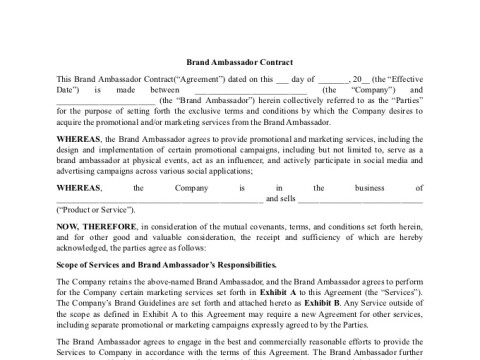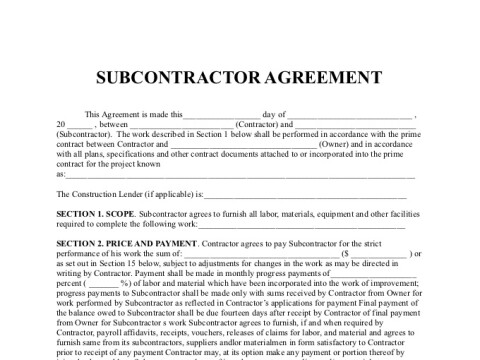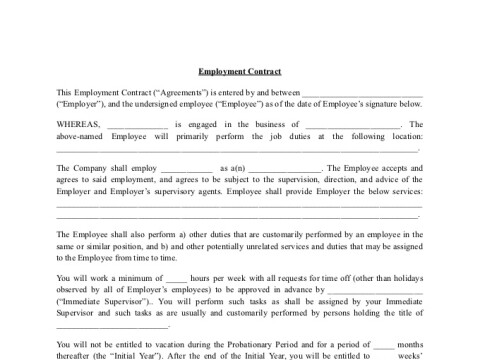Tips for Editing and Using Severance Agreement Templates
If you are terminating an employee and are concerned about future legal action, you may use a severance agreement. We have a simple to use template ready for editing and use today.
Download Template
Nearly every business owner has had to deal with terminating an employee because they are disruptive to the workplace, the employee is too difficult to deal with, or for any other reason you deem appropriate. However, one of your concerns is you are uncertain if you have the legal basis for terminating employment and as a result, to protect your business, you are considering having the employee sign a release to prevent your being sued later.
These releases are typically used in conjunction with a financial offer, known as a severance package. Severance agreements are tricky and if you are not careful about how specific clauses are worded, or if you run afoul of established rules governed by the Older Workers Benefits Protection Act and ERISA, you could face legal challenges, with significant financial penalties later.
We have assembled some guidelines for you to follow as well as some helpful resources to help you navigate the tricky world of severance agreements so you can get the most our of our Severance Agreement template.
Here is What We Will Cover Below
- Clauses For Review and Negotiation in Severance Agreements
- Avoid Costly Mistakes
- Links to Additional Resources
- Clauses For Review and Negotiation in Severance Agreements
It is crucial all of the relevant clauses be carefully reviewed with the employee, so they understand exactly what is in the agreement. All clauses should be carefully reviewed when editing and they should be reviewed with the employee to ensure they understand each clause.
- Termination of Employment — clarify the employee’s last day of employment..
- Non-Disclosure of Information — ensure internal information is not disclosed. Carefully review your state laws pertaining to this clause.
- Severance Benefits — review the benefits you are offering as part of the severance including pay, sick days, vacation days, and any benefits which may continue for a period following the termination (e.g. health insurance, disability insurance, etc.)
- Release of Claims against the Company — protect your business from future lawsuits.
- Employee Representations — understanding of the forfeiting of an employee’s right to sue in return for the severance.
- Knowing and Voluntary Consent — clearly states the employee is consenting to the severance agreement without threats of retaliation or coercion by your company or any person associated with your company.
- Time To Consider Offer; Time to Revoke Acceptance — avoid giving too little time and make sure you have made allowances to be in compliance with OWBPA.
- Construction of Agreement; Entire Agreement — no changes to agreement and/or any clause which allows changes in writing and executed by both parties.
- Governing Law — typically the state in which your business is located will be the law used. If different, make careful note of this.
- Severability — ensure that should one clause be deemed illegal in your state the remainder of the agreement remains intact.
- Confidentiality — whether or not the agreement may be discussed with third parties.
Make sure you let the employee know they are free to have the agreement reviewed by an attorney if they elect to do so.
Avoid Costly Mistakes
- Be fair with severance offering
- Clearly explain what the employee is giving up
- Use a reasonable timeframe for acceptance
- Avoid sounding threatening or coercive
- Use caution when dealing with older workers (Older Workers Benefits Protection Act (OWBPA))
- Ensure compliance with ERISA
Links to Additional Resources
For more information about severance agreements visit:
What is a Severance Agreement?
Tread Carefully Across the Severance Minefield
Negotiating Severance Agreements
States Take Action Against Nondisclosure Agreements
ERISA Requirements for Company-Sponsored Plans
Familiarizing Yourself with Older Workers Benefits Protection Act (OWBPA)
Getting the Severance Agreement Signed
Once all details of a severance agreement have been agreed to between you and your employee, you must have it signed. Nitro makes it simple to get these signatures without another face-to-face meeting. Customize our severance agreement template to meet your needs and then simply forward it to the employee. Thanks to eSigning, you can remove any barriers which may have prevented your getting the agreement returned in a timely manner. Start your free trial of Nitro today.


